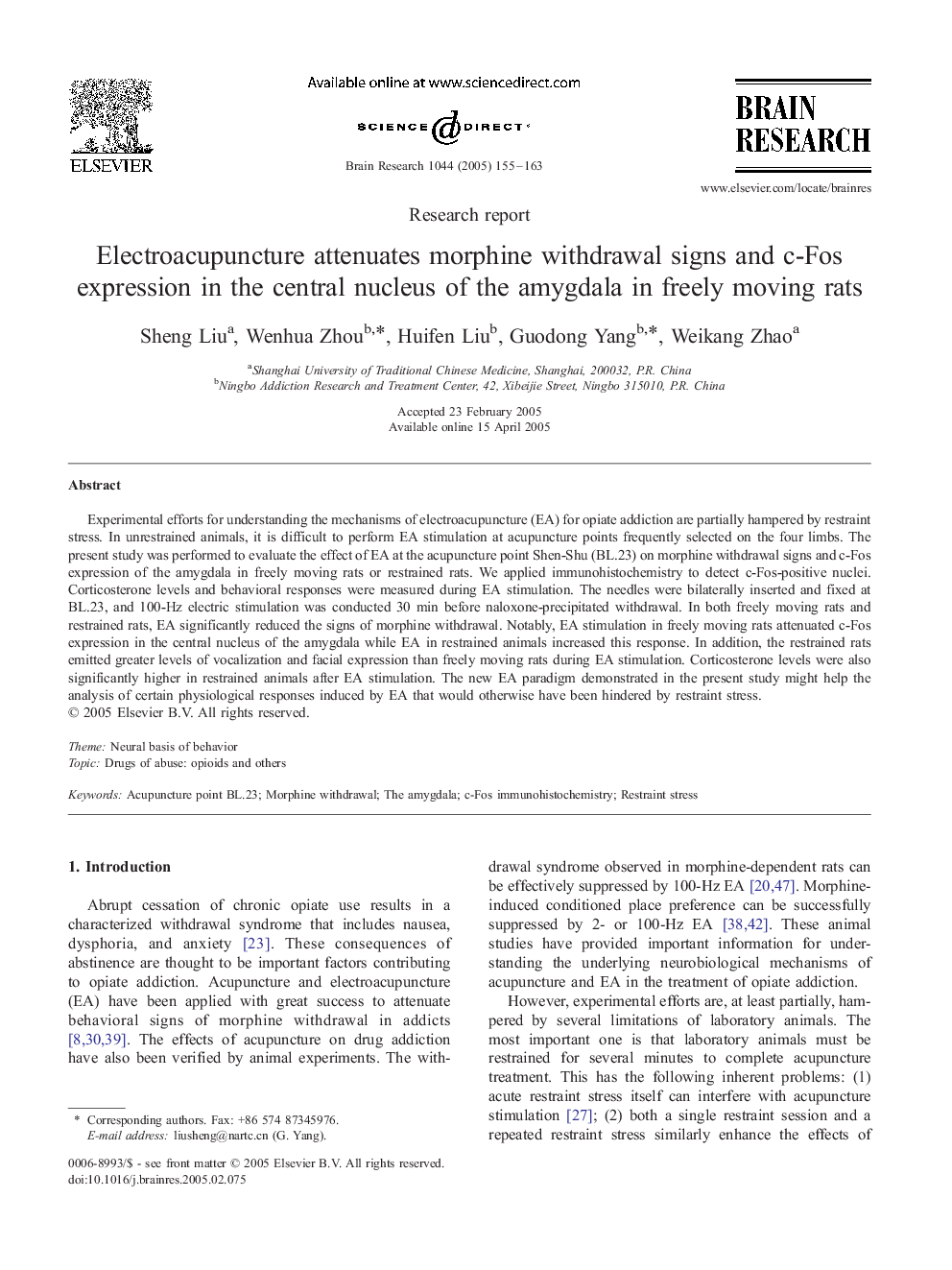| Article ID | Journal | Published Year | Pages | File Type |
|---|---|---|---|---|
| 9416311 | Brain Research | 2005 | 9 Pages |
Abstract
Experimental efforts for understanding the mechanisms of electroacupuncture (EA) for opiate addiction are partially hampered by restraint stress. In unrestrained animals, it is difficult to perform EA stimulation at acupuncture points frequently selected on the four limbs. The present study was performed to evaluate the effect of EA at the acupuncture point Shen-Shu (BL.23) on morphine withdrawal signs and c-Fos expression of the amygdala in freely moving rats or restrained rats. We applied immunohistochemistry to detect c-Fos-positive nuclei. Corticosterone levels and behavioral responses were measured during EA stimulation. The needles were bilaterally inserted and fixed at BL.23, and 100-Hz electric stimulation was conducted 30 min before naloxone-precipitated withdrawal. In both freely moving rats and restrained rats, EA significantly reduced the signs of morphine withdrawal. Notably, EA stimulation in freely moving rats attenuated c-Fos expression in the central nucleus of the amygdala while EA in restrained animals increased this response. In addition, the restrained rats emitted greater levels of vocalization and facial expression than freely moving rats during EA stimulation. Corticosterone levels were also significantly higher in restrained animals after EA stimulation. The new EA paradigm demonstrated in the present study might help the analysis of certain physiological responses induced by EA that would otherwise have been hindered by restraint stress.
Keywords
Related Topics
Life Sciences
Neuroscience
Neuroscience (General)
Authors
Sheng Liu, Wenhua Zhou, Huifen Liu, Guodong Yang, Weikang Zhao,
